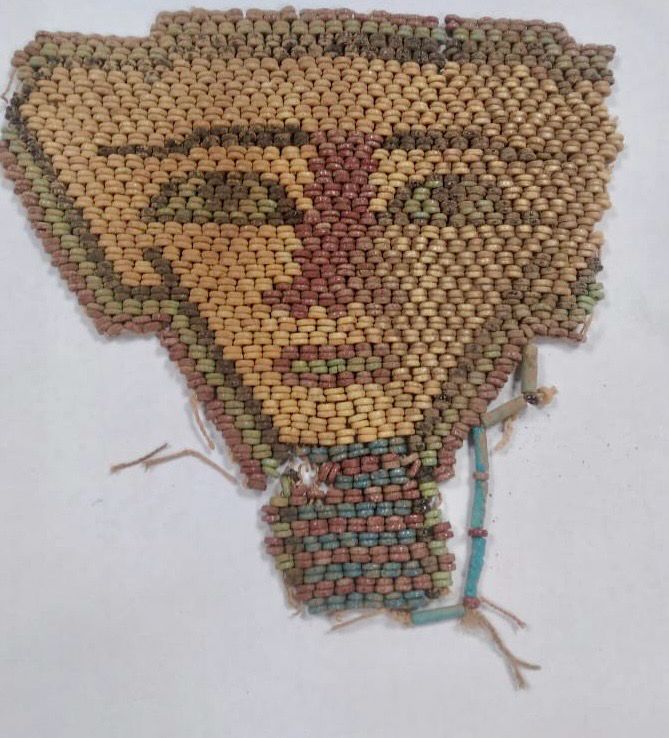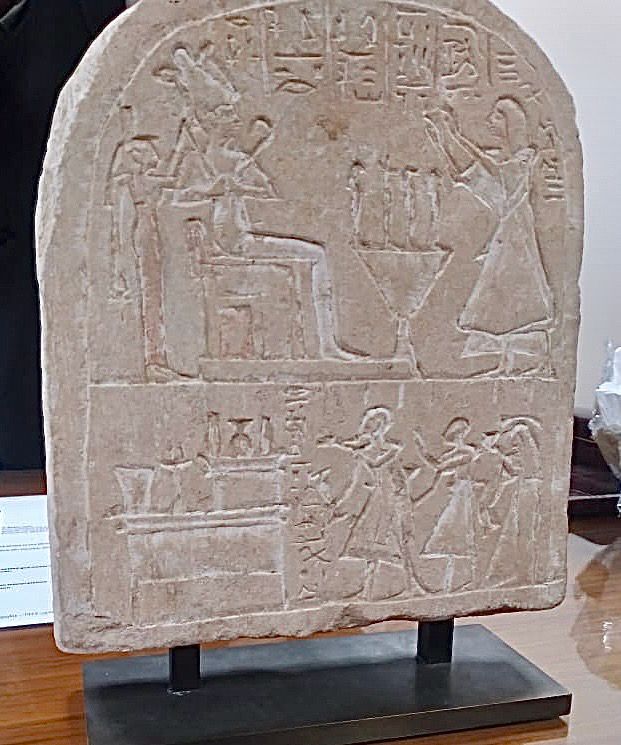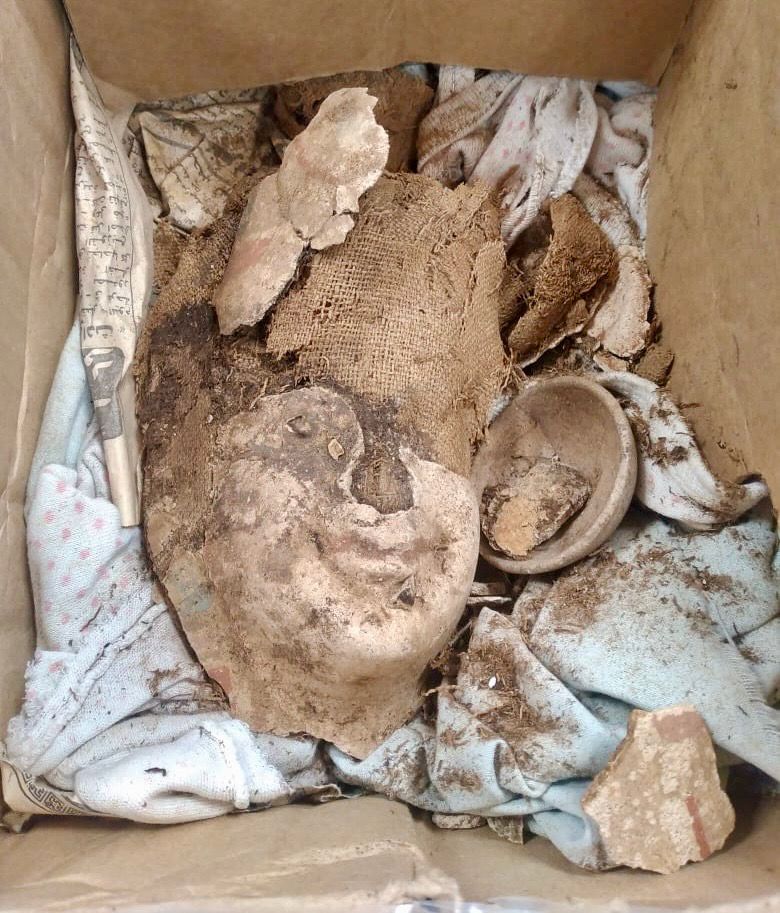Thank you Xander! The plan is to publish, currently working out where it would fit best 😁
10.08.2025 14:40 — 👍 1 🔁 0 💬 1 📌 0
❤️❤️❤️
08.08.2025 22:48 — 👍 0 🔁 0 💬 0 📌 0
66. Only around a thousand portrait panels remain in museum collections to date, the majority of them removed from their mummified owners by colonial archaeologists and art collectors.
08.08.2025 21:41 — 👍 4 🔁 0 💬 1 📌 0
65. This meant that while the portraits were not cheap, linen was often the largest expense for a burial, even when import of materials is taken into account.
08.08.2025 21:41 — 👍 2 🔁 0 💬 1 📌 0
64. Or, if a mummy wasn't painted, it was elaborately wrapped with 'rhombic' wrapping, which involved layers upon layers of linen to create diamond shaped patterns across the body.
08.08.2025 21:41 — 👍 1 🔁 0 💬 1 📌 0
63. The portrait mummies also often had elaborately painted footcases which depicted religious scenes, occasionally gilded.
08.08.2025 21:41 — 👍 1 🔁 0 💬 1 📌 0
62. Many portrait mummies also had scenes from the Book of the Dead inscribed or painted on them, often showing Anubis administering to the deceased, or Isis and Nephthys protecting the body.
08.08.2025 17:45 — 👍 6 🔁 0 💬 1 📌 0
61. There is one instance of a person depicted in a portrait whose profession may be mentioned - Hermione Grammatike's title suggests she was a teacher or educated woman, and valued that title enough to be buried with it written on her portrait.
08.08.2025 17:45 — 👍 5 🔁 0 💬 1 📌 0
60. Those 'Greeks of Egypt' may have been part of the 6475 katoikoi, a group of people from the Fayum who claimed descent from Ptolemaic Graeco-Macedonian mercenaries and used that heritage to gain socially and economically.
08.08.2025 17:45 — 👍 1 🔁 0 💬 1 📌 0
59. These names have often denoted the 'Greeks of Egypt', who used names to mark their cultural identities. They may have had 'Egyptian' names but often used 'Greek' names in public documents, likely bc those documents were in Greek/for administrative purposes.
08.08.2025 17:45 — 👍 1 🔁 0 💬 1 📌 0
58. While we don't have many named subjects for the portraits, the ones we do are named in Greek or Greek theophoric style - inspired by Greek/Egyptian gods. It's unclear if these names were the only names they had - they could have been Greek translations of Egyptian names or were 'public' names.
08.08.2025 17:45 — 👍 1 🔁 0 💬 1 📌 0
57. Floral tributes weren't the only things left on graves - there's also evidence of wooden crosses on later burials, small votives, burnt offerings, and some stelae.
08.08.2025 17:45 — 👍 1 🔁 0 💬 1 📌 0
56. Rose garlands and botanical remains have been found around graves and tombs with portrait mummies - wreaths with narcissus, immortelles, chrysanthemum, and marjoram have all been found, as floral tributes on mummies and graves.
08.08.2025 12:00 — 👍 4 🔁 0 💬 1 📌 0
55. Rose garlands in particular were associated with the goddess Isis, who was celebrated in Rome in the festival of Rosalia. In Greek customs, roses were also associated with death and embalming.
08.08.2025 09:48 — 👍 5 🔁 0 💬 1 📌 0
54. These stucco details could also go beyond simple depictions of a mummified body - they could include moulded arms and hands, holding rose garlands or ankh signs.
08.08.2025 09:48 — 👍 2 🔁 0 💬 1 📌 0
53. These stucco mummies with additional details were often gilded, some from head to toe, suggesting incredible wealth for the individual or their family. It also suggests that wealth wasn't necessarily the only reason behind the wooden portrait panels as many non portrait mummies were v elaborate.
08.08.2025 00:07 — 👍 3 🔁 0 💬 1 📌 0
52. Some mummies did have 'jewels' laid directly into the mummy cases, some including portraits. The gems, which seem to have been glass, were possibly taken from the owner's real jewellery, as one mummified woman was adorned with glass gems and an intaglio gem which may have come from a ring.
07.08.2025 23:39 — 👍 6 🔁 1 💬 1 📌 0
51. Speaking of aspirational adornment, many of the pearl strands worn by the women are simply too large to have been real - the pearls would have to have been natural not cultured, and it's physically impossible for them to have been that large.
07.08.2025 23:39 — 👍 5 🔁 2 💬 1 📌 0
50. Similarly, the clavi stripes worn by the subjects would normally be restricted to the equestrian classes in Rome, yet both men and women wear them in the portraits, and they certainly wouldn't have been equestrians. Instead it's probably an aspirational adornment.
07.08.2025 23:39 — 👍 1 🔁 0 💬 1 📌 0
49. In comparison, women tended to wear pink or purple hues, probably in emulation of the prized 'true' Tyrian purple restricted to the highest classes. Although it wasn't as restricted as written, given that textile fragments from the Eastern desert in Egypt have been found to contain it.
07.08.2025 23:39 — 👍 1 🔁 0 💬 1 📌 0
48. The male portrait subjects always wear white, but are occasionally depicted nude. Both depictions suggest a link to athleticism or even the gymnasium, as nudity was the 'uniform' of such education, and white clothing emphasised wealth and class - working men don't wear white clothes.
07.08.2025 23:39 — 👍 2 🔁 0 💬 1 📌 0

Facebook reminded me of this meme
07.08.2025 23:21 — 👍 69 🔁 11 💬 2 📌 3
47. These types of processions are somewhat reminiscent of the ancestor worship seen in Rome, where imagines or wax masks of the deceased would be worn and paraded to celebrate the dead.
07.08.2025 21:35 — 👍 1 🔁 0 💬 1 📌 0
46. Such processions also suggest the portrait (which usually matched the age/appearance of the deceased at their time of death) was done at or around the time of death, with painters visiting the place of embalming or perhaps the home during the 'laying out' period.
07.08.2025 21:34 — 👍 1 🔁 0 💬 1 📌 0
45. It's also possible that the portrait mummies were transported to their burial place in a procession, alongside the portrait which may have been attached at the tomb. The will of a woman called Protarous notes that her manumitted slave had to walk in her funerary procession.
07.08.2025 21:34 — 👍 1 🔁 0 💬 1 📌 0
44. At cities like Alexandria, while portraits have not been found, the practice of semi-public burial customs (e.g. banqueting chambers) was popular, e.g. the catacombs of Kom el Shoqafa. This suggests that interaction w the dead through festivals, meals, or rituals went beyond portrait mummies.
07.08.2025 21:31 — 👍 1 🔁 0 💬 1 📌 0
43. Scholars have also postulated that the 'dying out' of mummy portraits was due to movement and migration, with elites who had gained citizenship moving to larger cities such as Antinöopolis and Alexandria to better benefit from their new status.
07.08.2025 21:31 — 👍 1 🔁 0 💬 1 📌 0
42. On the other hand, the rise of Christianity may have shifted funerary practices (Hawara was used well into Coptic times), with wrapping techniques such as wedge shaped faces and plaster masks gaining popularity.
07.08.2025 21:31 — 👍 1 🔁 0 💬 1 📌 0
Professor of History at the University of Edinburgh
https://www.ed.ac.uk/profile/charles-west
We mobilise the humanities and social sciences to understand the world and shape a brighter future.
The Society for the Study of the Past is a new subject organisation that believes solidarity with the oppressed, liberation of the occupied and a more just future are core concerns of the historian. 🍉 Join us! ⬇️
societyforthestudyofthepast.com
We are a UK-wide educational charity that helps champion and promote participation in archaeology. We run the Young Archaeologists’ Clubs and the annual Festival of Archaeology. Join us to help shape the future of archaeology.
https://www.archaeologyuk.org
She/Her | PhD Researcher in History | MSc BioArch🦴 | BA Ancient History and Archaeology🏛 | Underrepresented Archaeologies + Youth Engagement + Neurodiversity Acceptance
🏴☠️🪙🤍😈
Fanfic writer, GO & OFMD fandoms
She/her. 40+
Supporting and promoting the classics across Scotland since 1902.
http://tinyurl.com/yf547j3p
Classics for All raises funds to support the teaching of classics – Latin, ancient Greek, classical civilisation and ancient history – in UK state schools.
linktr.ee/classicsforall
https://www.gc.cuny.edu/classics
Geoffrey Chaucer (Le Vostre GC): Servaunt of the Kynge. Blogger. Wryter of verse. Wearer of litel woolen hatte. Deputy Forestere of North Petherton. He/hym/hys.
Our publications, research, and higher education solutions spread knowledge, spark curiosity and aid understanding around the world.
View our social media commenting policy here: https://cup.org/38e0Gv2
PhD at EHU, Inheritance in Political Discourse in Plantagenet Britain and Ireland, MA Medieval Studies York, co-convener North West Medieval Studies Postgrad Network, in a love/hate relationship with TNA SC 8.
Supporting research at the University of Leeds, UK that uses digital methods, cultural heritage collections and archives, and explores digital creativity across digital humanities and beyond
We are a community of scholars of the ancient world and its reception in Oxford University.
Luxor Times Magazine is dedicated to Egypt—the land of civilization that continues to fascinate the world.
News about Classics, Antiquity and Religious Studies in Ottawa and beyond.
Actualités sur les études anciennes et les sciences des religions à Ottawa et ailleurs.
Part of @liverpooluni.bsky.social
Our collections include artefacts excavated from Egypt, Sudan and the Near East.
The Centre for the Study of International Slavery is a research institute led by National Museums Liverpool's International Slavery Museum and the University of Liverpool.
https://linktr.ee/csisliverpool
Expert opinion, news and student stories from the Department of Politics at University of Liverpool.
8-11 Abercromby Square
https://www.liverpool.ac.uk/politics/
https://bsky.app/starter-pack-short/NeEuwAr




